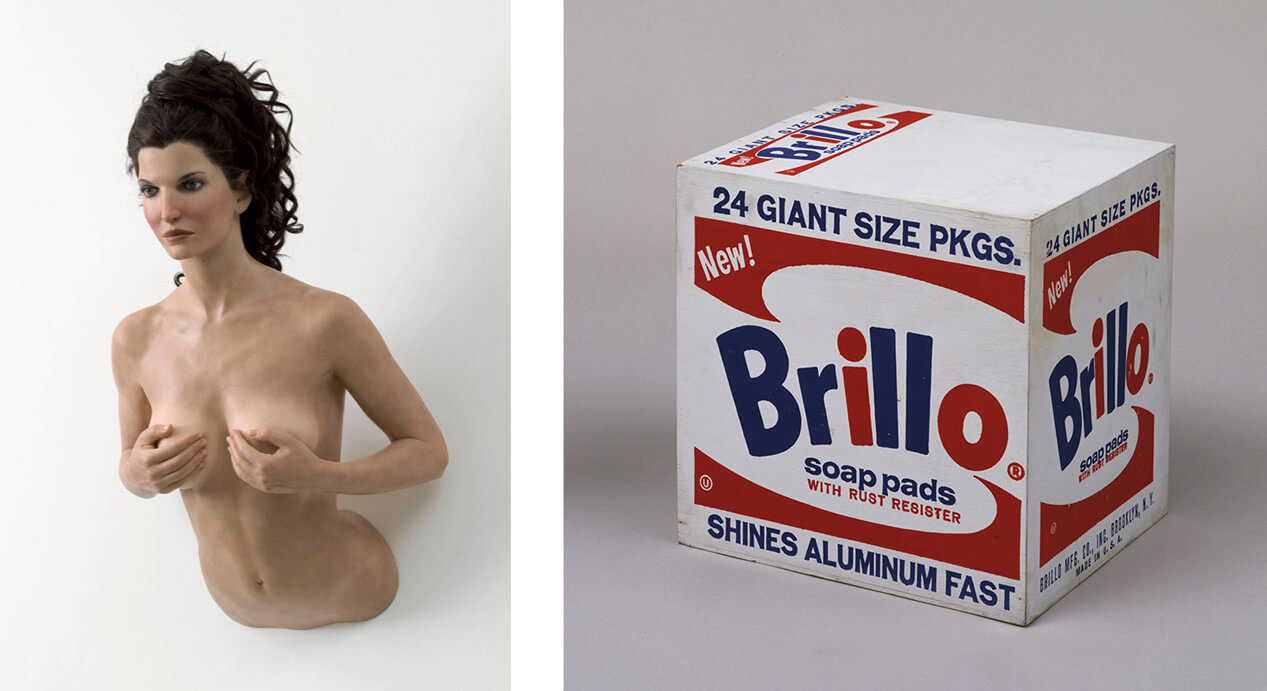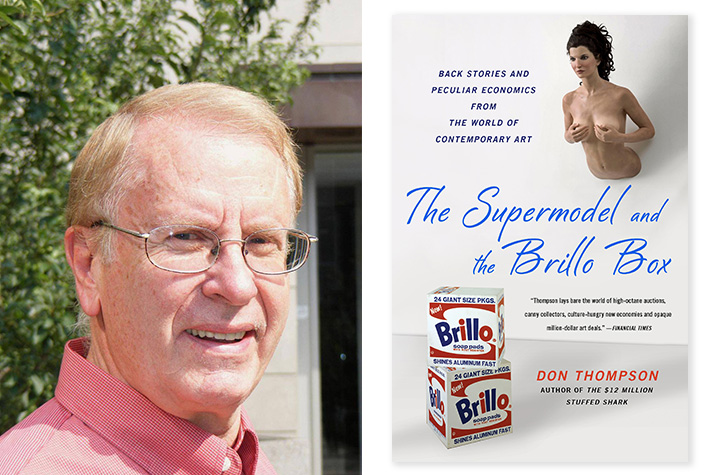
LEFT: Maurizio Cattelan, Stephanie, 2003, colored pigment, wax, synthetic hair, glass, metal. RIGHT: Andy Warhol, Brillo Box (Soap Pads), 1964, synthetic polymer paint and silkscreen ink on wood.
The Supermodel and the Brillo Box
Exploring the new art-world economic order.
—
On May 2, 2012, Edvard Munch’s The Scream made history when it sold for $107-million at Sotheby New York’s Impressionist & Modern Art Evening Sale after just 10 minutes of bidding. The work, although not by an instantly recognizable name like Picasso or Monet (ask a South American about Munch and you’ll likely be answered, “Who?”), commanded the unprecedented presale estimate of $80-million, then went for more than twice the artist’s previous record set only four years earlier, and became the eighth-most expensive painting ever sold at auction.
While all these facts are jaw-dropping, Don Thompson, an economist and professor emeritus of marketing and strategy at York University’s Schulich School of Business, argues persuasively in The Supermodel and the Brillo Box (titled for two high-stakes works of art) that there are far more compelling reasons to pay attention to The Scream than numbers alone. Its sale, and Sotheby’s marketing engine that thrust it into the stratosphere, are examples of the new art-world economic order that emerged in the wake of the 2008-2009 financial crash, in which the old maxims about buying art no longer apply and where cash and celebrity trump connoisseurship as the ticket into the cultural establishment.
In this engaging sequel to the author’s previous work, The $12 Million Stuffed Shark, which explored the question of art and its value, Thompson reveals the new rules for art and commerce that have come into play, and the new players that have come into the market. For example, thanks to the emergence of new museums in Abu Dhabi, Qatar, and Dubai, in recent years, buyers in these city-states have been purchasing approximately 300 museum-quality works a year, replacing traditional collectors at the top of the Western art market.
Thompson convincingly demonstrates how the globalization of art sales – in 2003 buyers who spent more than $500,000 for a single work at Sotheby’s came from 36 countries, and in 2012 buyers who spent over $1-million came from 63 countries – has contributed to the death knell for the traditional single-gallery model. The years 2012-2013 saw the closing of Jérôme de Noirmont in Paris, Margo Leavin in Los Angeles, and D’Amelio in New York thanks, in large measure, to the rise of the what he calls the “über-dealer,” the most famous one being Larry Gagosian, who boasts that the sun never sets on his international operation, including 13 galleries that span 12 time zones.

Dom Thompson, author of The Supermodel and the Brillo Box.
When an an über-dealer shows one artist’s work simultaneously in several galleries, explains Thompson, the relationship of supply and demand reverses, as multi-city exhibitions facilitate global hype, consumption, and higher prices. Scarcity of art can no longer be equated with value as it has been for centuries. More is more in today’s brave new art market. Yet, paradoxically, buying a masterpiece is far more challenging today than it was a generation ago as demand for contemporary art has increased exponentially. Its consumers, many of whom have become billionaires several times over, are often “reduced to jabbering gratitude” for their über-dealers, who hold the keys to the cultural galaxy.
Thompson presents his arguments as a series of economic case studies and avoids making any outright judgments about the art world. Yet, ultimately, The Supermodel and the Brillo Box takes the reader on a voyage into a dystopian, cultural landscape where it’s impossible not to sense a turn for the worst. Long gone are the days when collectors made weekend strolls through their favorite galleries to witness artists’ carefully curated new exhibitions. The book builds to Thompson’s chapter on the growing ubiquity and popularity of art fairs, the most important of which is Art Basel Miami Beach, a big-box store approach to art consumption where dealers have recorded 70 per cent of their annual sales in a matter of days at what he documents as “the best example of seeing art in the worst way.”
As collectors have become conditioned to buy works in fairs’ crowded shopping-mall-like conditions, complete with convention-centre lighting and easy sightings of visible “sold” stickers to alleviate buyer uncertainty, so too have they entered into a world where planned celebrity programming dominates the scene. In 2006, at Art Basel Miami, burlesque star Dita von Teese took the stage at a M.A.C.-hosted party and rode a giant lipstick tube that bucked liked a mechanical bull. In 2011, at the same fair, New York MoMA affiliate PS1 welcomed guests to a Kim Kardashian look-alike contest. As Thomson puts it, the market is now the medium. In other words, we live in a time where the spectacle that surrounds art’s consumption is more dazzling than the art itself.
Anyone interested in the contemporary art world will discover plenty of familiarity and much of interest in the dark new universe documented in The Supermodel and the Brillo Box. That said, there is one subject that the reader will not find addressed in this otherwise excellent account: As the rules for selling 21st-century art are turned upside down, what will define the art and artist in the years ahead? The answer to this question will hopefully be the focus of Thompson’s next book.